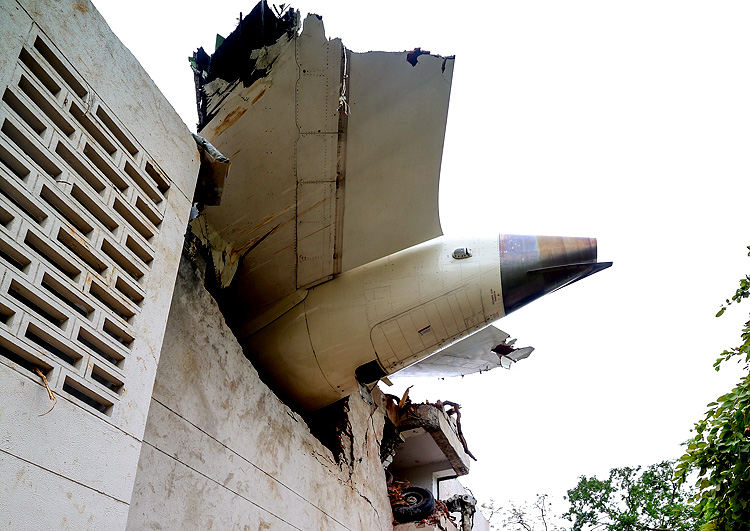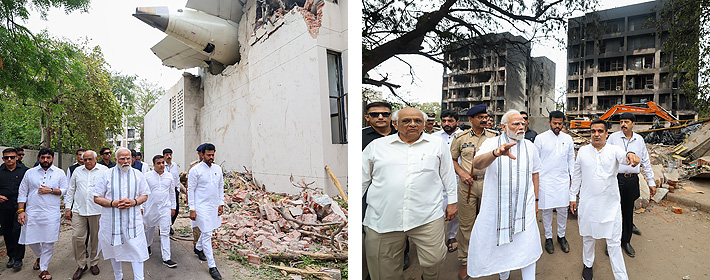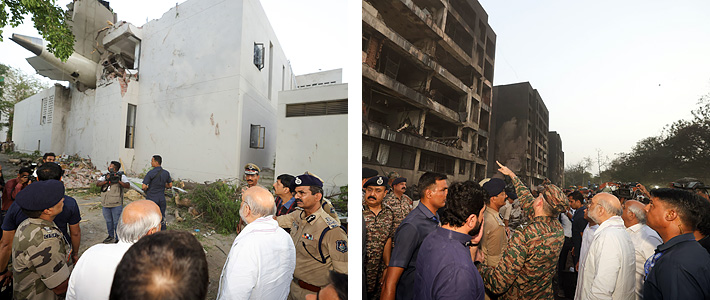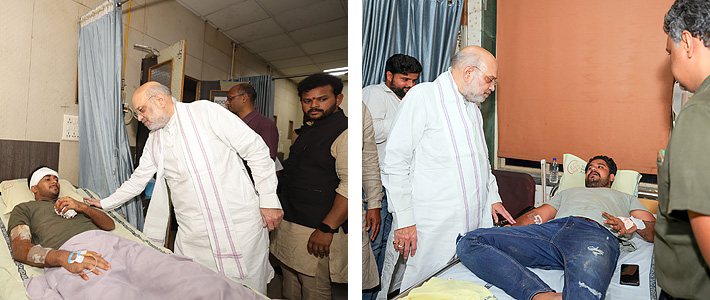A Defining Moment for Aviation Safety in India
Why the Ahmedabad Air India 787 crash must be a turning point for aviation safety in India

The tragic crash of an Air India Boeing 787 Dreamliner in Ahmedabad has sent shockwaves through India's aviation ecosystem. As investigations begin, now bolstered by the arrival of a US National Transportation Safety Board (NTSB) team to assist the Aircraft Accident Investigation Bureau (AAIB) the need for introspection is more urgent than ever.
It is a warning siren for an industry that is expanding rapidly, but perhaps without fully fortifying the safety infrastructure required to sustain such growth
Speculations are rife as to what caused the crash. However, this is not merely a case of technical failure or an isolated oversight. It is a warning siren for an industry that is expanding rapidly, but perhaps without fully fortifying the safety infrastructure required to sustain such growth.
It must catalyse a national reckoning on one fundamental truth: aviation safety cannot be compromised, delayed, or deprioritised, not in policy, not in practice, and certainly not in the pursuit of commercial growth.
Safety must be more than a buzzword
India is today the world's third-largest domestic aviation market. With increasing aircraft orders, new entrants in the LCC space, and record-breaking passenger numbers, the sector is undoubtedly on an upward trajectory. But this upward curve also magnifies every gap in safety oversight, airworthiness enforcement, and operational discipline.
Aviation safety cannot be compromised, delayed, or deprioritised, not in policy, not in practice, and certainly not in the pursuit of commercial growth
The Boeing 787 is one of the most advanced commercial aircraft in operation, boasting fly-by-wire systems, composite structures, and state-of-the-art avionics. That such a technologically superior aircraft could be involved in a catastrophic accident in domestic operations raises profound concerns.


It compels us to ask difficult questions:
- Was there a lapse in maintenance or pre-flight inspection protocols?
- Were known defects overlooked or underreported?
- Was crew fatigue a factor?
- Are reporting systems strong enough for ground staff and engineers to voice concerns?
The answers may emerge over time, but the underlying issue is clear: safety in Indian aviation is still treated as an obligation and not an operational philosophy.
Cutting corners is a dangerous culture
In a hyper-competitive airline market, it is tempting to shave costs wherever possible. Lean staffing, deferred maintenance schedules, aging parts, and pressure to meet tight schedules etc, all these factors, if unchecked, can form a perfect storm.
Unfortunately, some operators have begun to view safety as a cost centre, rather than the bedrock of their legitimacy. When safety is seen as negotiable, it is only a matter of time before negligence results in tragedy.
The underlying issue is clear: safety in Indian aviation is still treated as an obligation and not an operational philosophy
India's record is not unblemished. The country has experienced multiple safety-related warnings in recent years like grounding of aircraft due to engine failures, DGCA audits uncovering inconsistencies in logbooks, and anonymous reports flagging training shortfalls. These cannot be brushed aside as statistical anomalies in a large system. They are evidence of systemic vulnerability.


Policy must lead, not follow
India cannot afford a reactive safety framework. We must move from event-driven policy responses to a preventive safety architecture that is resilient, adaptive, and transparent.
Unfortunately, some operators have begun to view safety as a cost centre, rather than the bedrock of their legitimacy
- Strengthen AAIB's independence and authority. The Bureau should have complete autonomy to investigate incidents without interference, with direct access to international technical support when needed.
- Mandate third-party safety audits for all commercial operators, with audit results made partially available in the public domain to ensure transparency and accountability.
- Revamp DGCA's internal capabilities. Equip it with better staffing, AI-led surveillance systems, and global best practices in airworthiness management.
- Create a national aviation safety strategy board that is not tied to ministry leadership or commercial interest and is tasked with policy development, regulatory evolution, and industry-wide safety benchmarking.
- Encourage a just culture. Promote safety reporting without fear of retribution. Maintenance engineers, cabin crew, and ground staff must feel empowered to raise alarms without bureaucratic or punitive backlash.
Fleet expansion and safety modernisation should go hand-in-hand
India is poised to induct over 1,500 aircraft in the next decade, including new-generation narrowbody jets and turboprops for regional connectivity. Under schemes like UDAN and RCS, smaller airports are opening across the country, with new routes connecting Tier II and III cities.
We must move from event-driven policy responses to a preventive safety architecture that is resilient, adaptive, and transparent
But safety frameworks have not scaled in tandem with fleet and network expansion. Many smaller airports lack adequate emergency services, certified maintenance infrastructure, or qualified MRO support. This mismatch is not sustainable.
Conclusion:
A crash is tragic but ignoring its lessons would be catastrophic. The Ahmedabad Boeing 787 crash must not be treated as an isolated accident or procedural hiccup. It is a stark reminder that in aviation, there is zero margin for complacency. Each lapse however small, can cascade into irreversible consequences.
India's aviation leadership now stands at a fork in the runway. One path leads to global excellence through transparent, reform-driven safety evolution. The other risks repeating history, with lives and credibility at stake.
The choice should be obvious. Because in aviation, every safe landing begins with an uncompromising commitment to do things the right way, each and every time.





